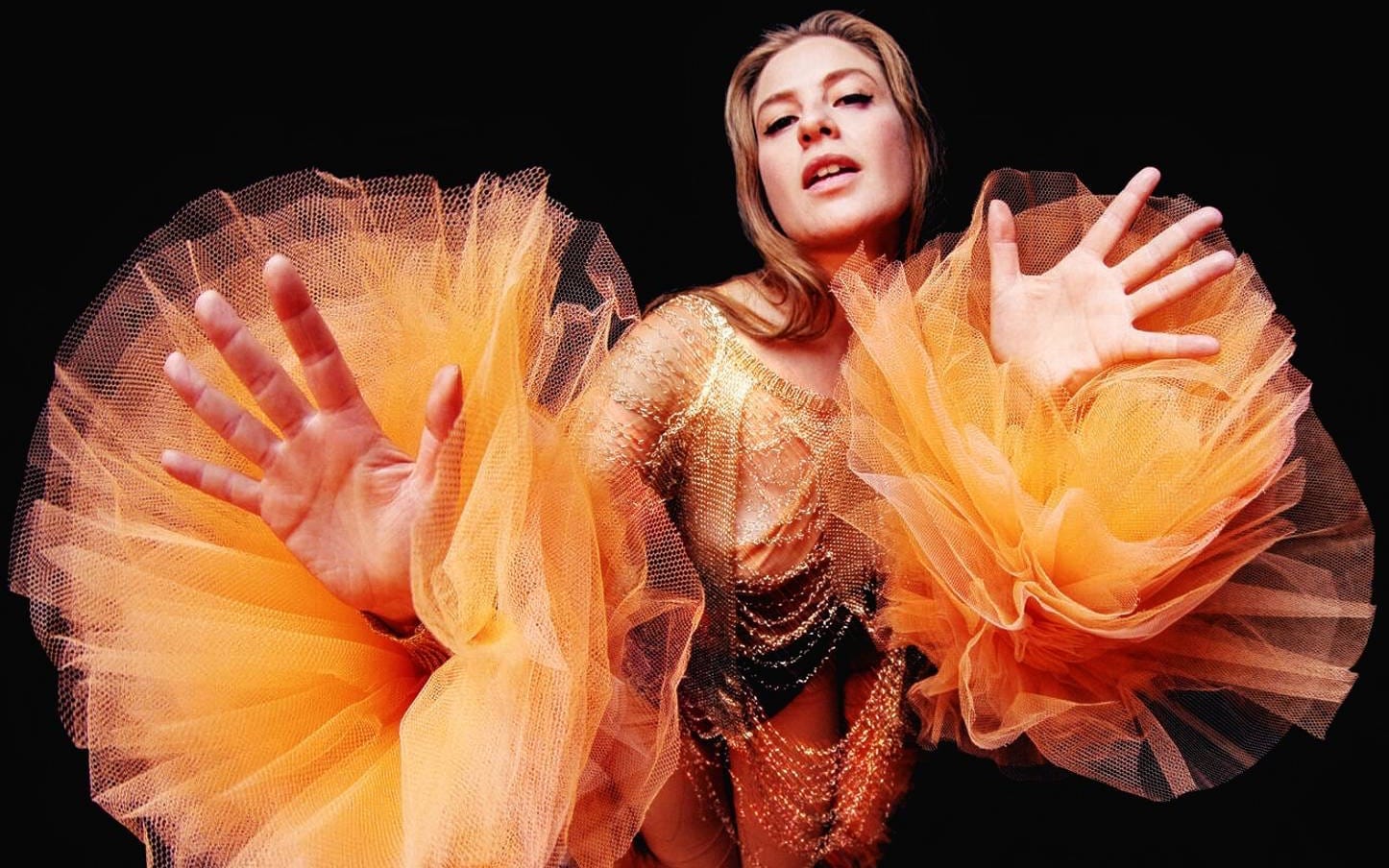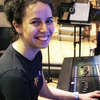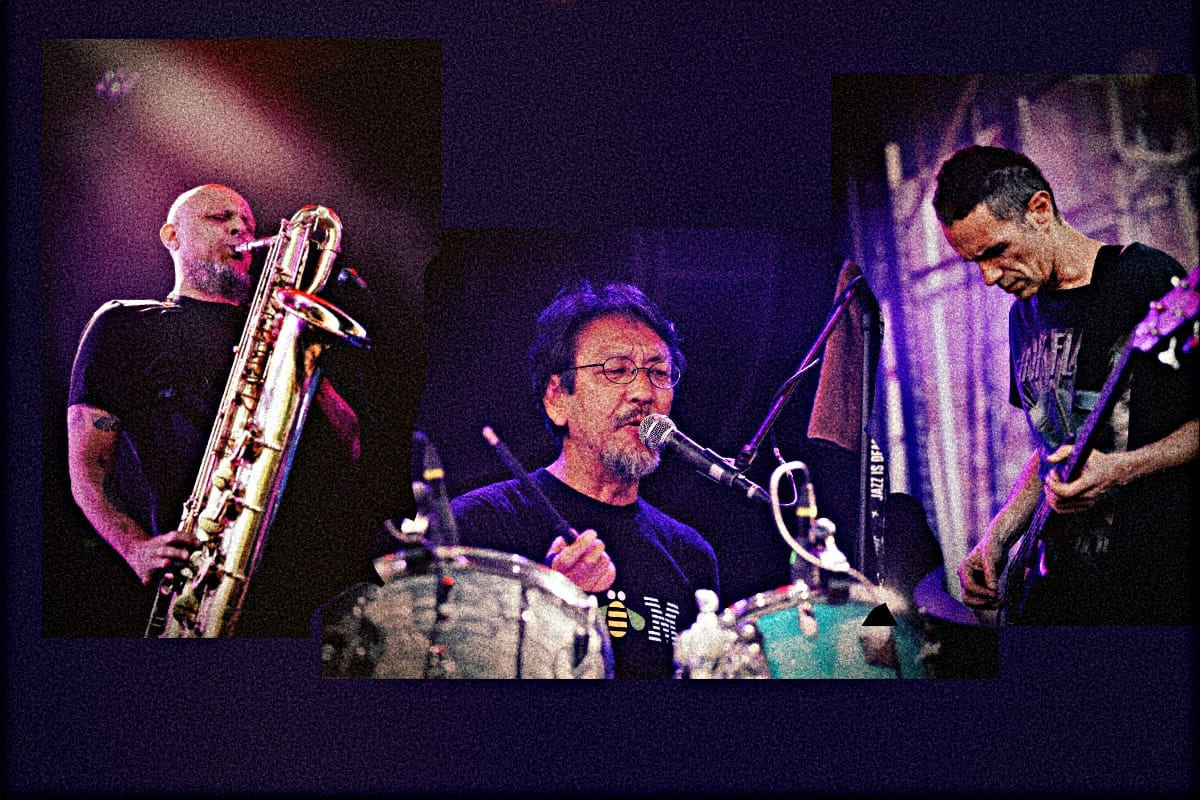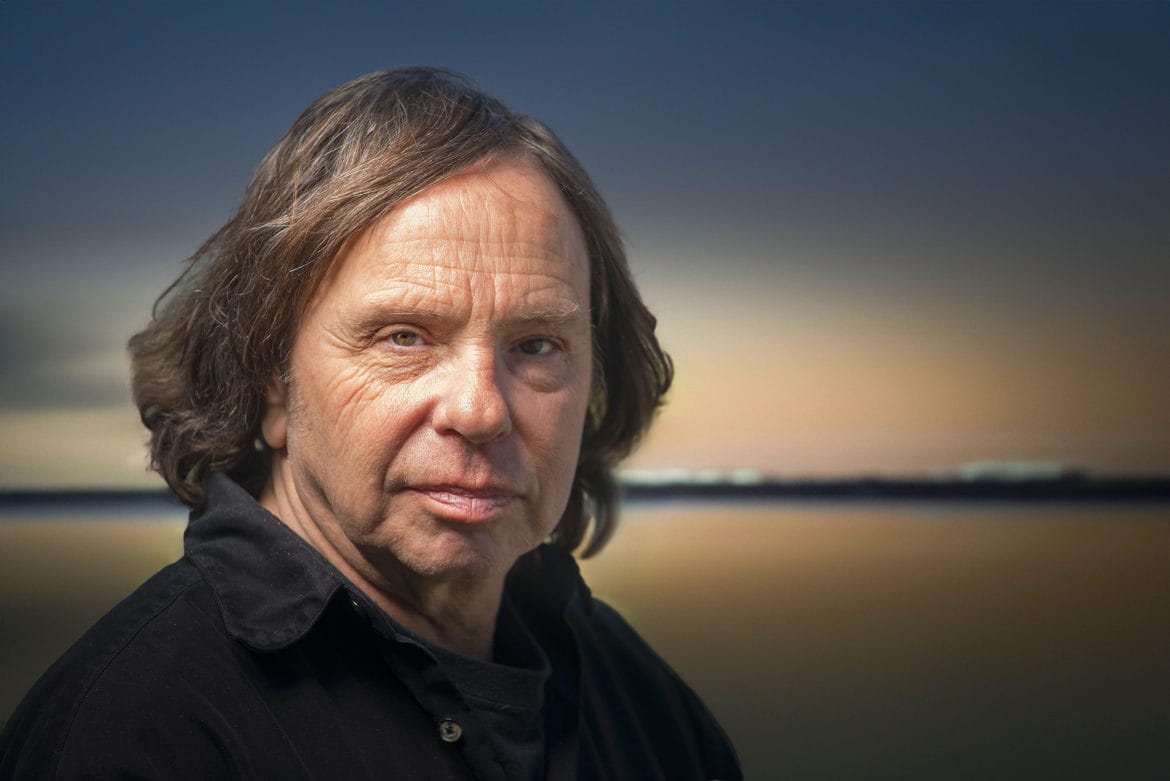Chagall is a music producer, singer, performer, programmer and early adopter of the Mi.Mu gloves (wireless data gloves to perform music through gesture). From her studio in Dutch Dunes came her first album Unlocked, combining 80s synth pop and alt R&B, its live show set in the light installation B.A.B.Y, and her foundation Lovelace.
Arina Korenyu: Congratulations on your first album! According to you Spotify, it has been 10 years between your first single release and Unlocked. How long in total did you work on it and why did it take you so long?
Chagall: Multiple reasons. In that time I made three live shows and every time they were produced with new technology, like first with the Mi.Mu gloves, then with the visuals, then with the suits and avatars, and then, of course, I was working on B.A.B.Y. – my light installation. That takes a lot of production effort and headspace from me that is completely different from making music.
To embrace that making music is my job was a bit of a mental struggle for me because the effect of it is not as noticeable. That’s making me sad, of course, because for me music is the core reason why I am doing all these things, but people have been already liking my shows, even though I didn't release anything for long.
During the pandemic, when I couldn't play shows anymore, my refuge was music making. We were writing with lyricist Robert Isaf to let go of the stuff that was going on with us and it was so pure and totally liberating. That’s also kind of where the title Unlocked came from.
The original idea was to just keep releasing the music as we were writing it without doing too much production, mixing and mastering. I think I did that with two songs and then I got back into the live production mode because it started itching a bit and Paradiso in Amsterdam offered me to make something.
So, I worked on the Unlocked Live Show and built B.A.B.Y first and spent whole 2021 on it. I had the demos of all the songs but I didn't have any finished productions. Only 1.5 – 2 years ago I started producing the songs.
AK: I know that for this album you worked together with many people. You had a co-producer Raven Bush, you already mentioned lyricist Robert Isaf, mix/master engineer Matt Allaby. How do you ensure effective collaboration?
C: Because most of the songs were made over quite a long period of time there hasn't been a very certain deadline for collaborators when the album needs to be finished. Robert's work was done pretty early on because he writes very quickly. Sometimes at the sessions maybe Raven is working on production, I'm on the melody, and Robert writes the lyrics as we go.
I didn't have a budget for someone else to fully produce album for me but also I wanted to produce myself. It depends on a song, in some Raven was more of an actual producer and arranger. His first instrument is violin but he also plays keys, guitar and bass. Often, I would send him a project and he would just put down lots of stems, which I would edit and arrange afterwards. There are also a few tracks, where he didn't do anything except listening and giving feedback.
My friend Alvin Ryan, who is a drummer and used to be in my touring band, programmed drums.
AK: Your vocal performance sounds great technically and emotionally. How did you record your voice? Did you work alone in your home studio or with your co-producer? What helps you to achieve such a strong performance on a record?
C: I think I recorded all the vocals by myself. I like the freedom of experimenting and doing stuff over and over again. I recorded most of the vocals here in this cabin in the dunes. I rented a bunch of microphones, tested them. The one that I decided for turned out to be quite expensive.
I didn't have a proper studio at that moment, so Matt suggested to hang up some duvets in my bedroom but then also said that the best studio with the least problems is just outside. So, most of Dunes, I recorded on a not windy day outside. I wouldn't have any reflections and you could also hear the sounds of the place that I was singing about.
AK: Beautiful! I also wanted to underline how cool synths and basses sound in this album. How deep did you get into sound designing those or, if these are not totally original sounds, could you tell what gear you used to make those?
C: It depends a little bit on the tune again because some of the synths and basses were made by Raven. My favourite is Alpha Juno 2. I use a lot of Arturia bundle, DX7, OB-X, and Juno VST from TAL. I made a lot of pads in Dunes and City No More but I don't have a lot of hardware, so most of it is from the box. I also use guitar with lots of effects for sound design.
AK: Since you are the artist famous for creating immersive experiences on stage, do you plan to release Unlocked in Dolby Atmos or other spatial audio formats?
C: The track Shoeless was recorded in a church with an engineer specializing in immersive mixing. We set up 12 microphones pointing in all directions in the middle of the church to record the reflections of me singing in that space. We also reamped the Juno and a lot of other sounds from the track there. Then I made a stereo mix out of those stems, but Richard Burki, engineer from Future Phonic Studios, did an immersive mix of Shoeless. So it exists but we're still figuring out how to release it.
Also, I've just finished building my studio and my objective is to have a spatial setup in here as soon as possible. I believe that to create music for this environment I need to start making it in that environment too.
In addition, next week I have a meeting with a space in Amsterdam that has an immersive sound system to see if it would be possible to spatialize my show with B.A.B.Y there.
AK: Are there any specific messages or emotions that you hope your listeners will take away from the album?
C: I think this album is about the journey of getting to know all sides of yourself. That may seem scary and hard at first, to accept all uncomfortable sides, but if you do it, it really means freedom. I want to give people some sort of big musical hug and my main message is whatever is going on with you, that’s okay because that's part of you and it's a really good idea to accept that.

The artwork is made by also a long collaborator Eduardo Fitch and it's called The Capture. It is basically two of me, falling and holding each other. The technical side of that image is made of my avatars and combined with an actual photograph. I'm holding myself while we're basically free falling in this vacuum of everything and that's also the message that you really have to hold yourself in whatever vacuum you feel like you're in.
AK: Could you elaborate on B.A.B.Y’s concept?
C: I started already in 2014-15 exploring motion sensors to control live audio and visuals because I didn't enjoy playing electronic music with buttons and faders on stage. I was really lucky to run into MiMu – the company behind the gloves that I've been using since that time. The basic concept is that you use movement to control digital elements in music and visuals, trying to make digital arts more organic and human.
B.A.B.Y is a big light installation and it stands for “Bionic Assistant for Becoming Yourself”. That is really related to the whole concept of the album, obviously. B.A.B.Y is female. She exists from 12 LED arches that are about 3.5 meters tall, standing in a semicircle. I'm in the middle. She has eight moving heads at the top and at the bottom, so she knows everything about my position on the stage, and I control all of these lights and the audio that's running in Ableton Live with my movements. All the visuals and everything that's happening in the lights are created in TouchDesigner.
AK: Do you have any future plans for showcasing it?
C: I really want to but it's sometimes difficult to find venues and promoters to book this show. Maybe this interview can set this straight. People think that this is really complicated. The show itself is complicated, yes, but I've already programmed everything and worked months on rehearsing it. It doesn't take more than two hours to set everything up. Unfortunately, for the normal festivals, this is still a bit much because they like to have a 20-minute changeover. However, for the impact and the spectacle that it is, two hours is not that long.
Another thing that some popular venues are scared of is something that's experimental. Even though my music is pretty poppy it still feels like maybe I'm a little bit too much on the forefront. Therefore, my next plan is to make something for locations that are meant for immersion.
AK: I also wanted to talk about your project LoveLace, a foundation and production house supporting female & gender non-conforming artists in developing tech heavy live experiences. Could you tell more about its mission and what inspired it?
C: I noticed whenever I was giving talks at schools, there were a lot of sparkles specifically in female eyes. I realized that it's pretty important for me as a role model to inspire and motivate more girls to embrace technology themselves too, because, let's be honest, it's still very male dominated scene.
When I was learning technology, I had a safe environment where it wasn't questioned that I will be able to do it. That was at MiMu, the startup behind the gloves, led by Imogen Heap. 50 percent of the people who work there were female. I mainly worked with the guys but they helped a lot in my learning process. Therefore, I don't necessarily think that women need to be taught by women but they need to see female role models and have a safe environment where they can feel like it's fine to not know something, ask questions and try again.
I don't really agree with an exclusion, which is what happens now because I'm running a series of workshops that are not for men. I don't like that but I think it creates an environment where people who join don't feel a risk of being elbowed out. Hopefully that won't be necessary in the future.
AK: In October you organized first workshop on creating reactive visuals for the performance. What are your next plans?
C: There are going to be at least two more physical gatherings in the Netherlands this year, but I need to do it online as well because my audience is pretty international
AK: In general, what are your next plans as an artist?
C: I have this dream about dome performance and getting more into immersive audio. I was thinking maybe my music can also be bit heavier and danceable. What's coming out is not necessarily that, but I am giving myself some freedom to not think about it now. I can also imagine that in the future there'll be more people on stage with me again. I do really miss having a band, but maybe it could be dancers. I do hope that there will be more shows with B.A.B.Y still because I've worked on it for so long and now it feels like an extension of me. It is also becoming really fun to perform with her.







Comments